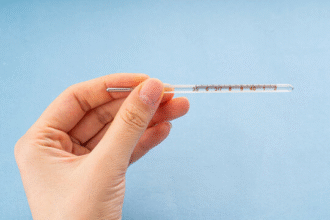A Short Story: Mr. Chen’s First Clues
Mr. Chen noticed a slight tremor in his right hand while reading the newspaper. He thought it was fatigue, but over months his movements slowed and his handwriting shrank. Visiting a doctor helped him understand these were signs of Parkinson’s disease—not the end of life, but the start of a manageable journey.
What is Parkinson’s Disease?
Parkinson’s disease (PD) is a common neurodegenerative disorder that mainly affects movement. It occurs when certain brain cells—dopaminergic neurons in the substantia nigra—gradually degenerate and die. These changes are often accompanied by abnormal protein clumps called Lewy bodies. The loss of dopamine (a chemical messenger) in brain pathways that control movement causes the core symptoms of PD.
How Common Is It?
PD is most common in middle-aged and older adults. Typical onset is around age 60, though younger-onset cases (under 40) can occur. Large studies show about 1% of people over 60 in Europe and North America have PD, and prevalence rises in older age groups (over 4% in those older than 80). In China, studies report about 1.7% prevalence in people over 65.
What Causes Parkinson’s?
The exact cause isn’t fully understood. Likely contributors include:
- Genetic predisposition in some families.
- Environmental influences and exposures.
- Age-related changes and oxidative stress that damage neurons.
- A mix of factors in many people, with no single identifiable trigger.
Main Symptoms — Motor and Non‑Motor
Parkinson’s symptoms fall into motor (movement) and non‑motor categories.
Motor symptoms (the most typical):
- Resting tremor: A shaking that often starts in a hand or fingers and is most noticeable when the limb is at rest. About 70% of patients report tremor as an initial sign. It may appear as a “pill‑rolling” motion at roughly 4–6 cycles per second.
- Bradykinesia (slowness): Movements become slower; everyday tasks take longer.
- Rigidity: Stiffness and resistance when a limb is moved by someone else.
- Postural instability and gait problems: Shuffling steps, difficulty turning, and risk of falls.
- Freezing of gait: Brief inability to step forward, common in advanced disease.
Non-motor symptoms (often underestimated):
- Sleep problems, daytime sleepiness, and vivid dreams
- Mood changes: depression, anxiety
- Autonomic symptoms: constipation, low blood pressure on standing, urinary urgency
- Cognitive changes: slowed thinking or memory problems in some patients
- Loss of smell (hyposmia) may appear years before motor signs
How Is Parkinson’s Diagnosed?
There’s no single test for PD. Diagnosis is clinical—based on medical history and a neurological exam looking for the core motor signs (tremor, bradykinesia, rigidity, postural instability). Doctors may also use:
- Response to medication: Many people with PD show clear improvement with levodopa.
- Imaging tests: Brain scans (like DAT scans) can support diagnosis in unclear cases, but are not always necessary.
Treatment Options
While there’s no cure yet, many therapies control symptoms well and help people maintain quality of life:
- Medications:
- Levodopa (often combined with carbidopa) replaces dopamine and is the most effective for managing motor symptoms.
- Dopamine agonists (e.g., pramipexole, ropinirole) stimulate dopamine receptors.
- MAO‑B inhibitors and COMT inhibitors help prolong dopamine action.
-
Dosing changes and side‑effect management are key—work closely with your neurologist.
-
Surgery:
-
Deep brain stimulation (DBS) is an option for select patients whose symptoms or medication side effects cannot be controlled by drugs.
-
Rehabilitation and supportive care:
- Physical therapy and exercise improve strength, balance, and mobility.
- Occupational therapy helps with daily activities and home safety.
- Speech therapy addresses voice and swallowing issues.
Everyday Self‑Care Tips
- Stay active—regular, varied exercise is one of the best things you can do.
- Keep a consistent sleep routine and manage medications carefully.
- Prevent falls: remove loose rugs, improve lighting, and consider assistive devices.
- Maintain social connections and mental health support.
- Use a medication diary or pill organizer and keep follow‑ups with your clinic.
Common Myths and Facts
-
Myth: “Parkinson’s only happens to the very old.”
Fact: While more common with age, PD can begin earlier in life. -
Myth: “If someone has a tremor, they must have Parkinson’s.”
Fact: Many conditions cause tremor; a careful exam differentiates them. -
Myth: “Surgery cures Parkinson’s.”
Fact: Procedures like DBS help control symptoms for the right patients but do not cure the disease.
When to See a Doctor
See a neurologist if you notice persistent tremor, slowness, stiffness, or balance problems. Early evaluation helps start effective treatments and plan supportive care.
Frequently Asked Questions
Q: Will I become disabled quickly?
A: Progression varies widely. Many people live active, productive lives for years with proper medication, exercise, and support.
Q: Are there lifestyle changes that help?
A: Yes—exercise, good sleep, healthy diet, and social engagement all make a positive difference.
Q: Is Parkinson’s genetic?
A: Most cases are sporadic. Some families have genetic forms—ask your doctor if family history is a concern.
Resources and Support
- Parkinson’s Foundation: https://www.parkinson.org
- Michael J. Fox Foundation: https://www.michaeljfox.org
- Local movement disorder clinics and patient support groups (ask your healthcare team)
Takeaway
Parkinson’s disease is a complex but manageable condition. Early diagnosis, medication management, exercise, and supportive therapies let many people keep independence and quality of life. If you suspect symptoms, make an appointment with a neurologist—knowledge and action make a difference.







